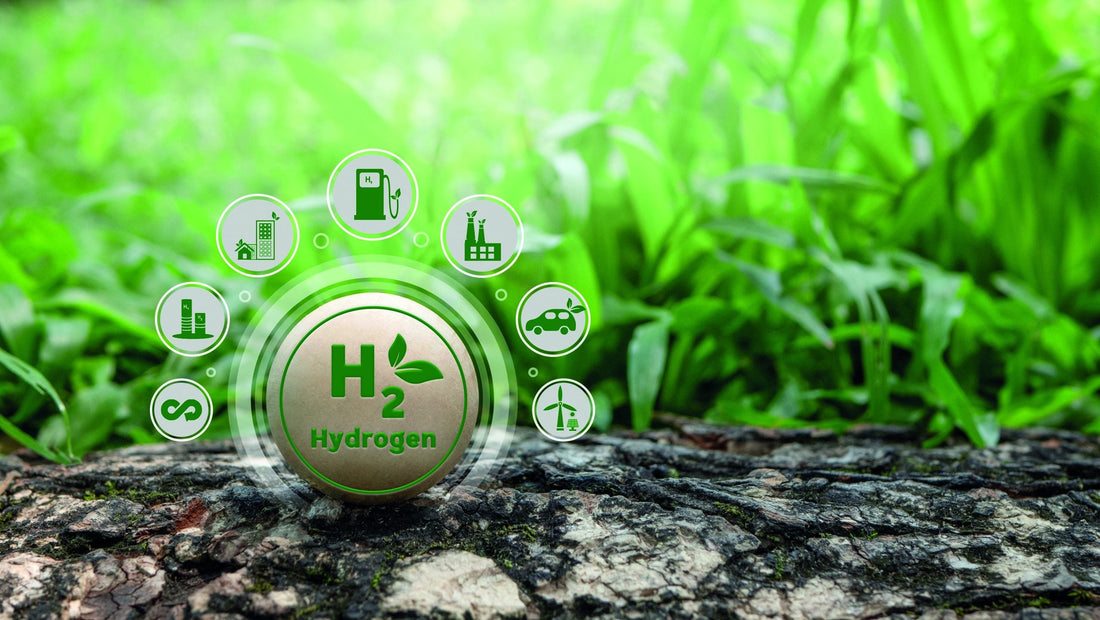
Green Hydrogen: A Promising Future for Renewable Energy
Share

In the race to decarbonize the planet by 2050, green hydrogen stands out as a transformative solution. Hydrogen, the most abundant element in the universe, is already fueling innovations in transportation and industry. Now, the push to produce green hydrogen—hydrogen generated using renewable energy—promises to revolutionize energy markets, drastically reduce carbon emissions, and offer investors an unparalleled opportunity to shape the future of sustainable energy.
What is Green Hydrogen, and Why Does It Matter?
Green hydrogen is a clean energy source produced by splitting water into hydrogen and oxygen using renewable electricity. Unlike traditional hydrogen production, which accounts for over 2% of global CO₂ emissions, green hydrogen produces zero emissions. It only releases water vapor when consumed, making it a vital tool in combating climate change.
Countries such as the U.S., France, China, and Germany are already leveraging hydrogen for energy, with nations like Japan leading in innovative applications. Green hydrogen’s potential to decarbonize industries—such as transportation, heavy manufacturing, and energy storage—positions it as a cornerstone of global sustainability strategies.
How Technology Drives Green Hydrogen’s Growth
Digital innovation, particularly through artificial intelligence (AI) and the Internet of Things (IoT), is accelerating the green hydrogen transition. Here are four cutting-edge technologies reshaping the landscape:
1. Advanced Analytics
· Data-Driven Optimization: Plant and fleet-level analytics transform operational data from tanks, pipelines, and weather conditions into actionable insights.
· Predictive Maintenance: Analytics predict equipment failures, optimize electrolyzer uptime, and minimize energy losses.
· Investor Benefits: Digital models aligned with analytics offer insights for maximizing returns and reducing operational expenses (OPEX).
2. Digital Twins
· Risk Reduction: Digital twins simulate various system designs to identify optimal configurations, reducing risk by 30–50%.
· CAPEX Optimization: By modeling scenarios based on weather, demand, and infrastructure, digital twins can cut capital expenditure (CAPEX) by 10–15%.
· Enhanced Decision-Making: Investors gain confidence in project viability before capital commitment.
3. Real-Time Monitoring and Control
· Efficiency Boost: AIoT enables monitoring of energy consumption, production rates, and asset health, reducing energy costs by up to 20%.
· Proactive Management: Intelligent alarms and remote control systems ensure quick responses to anomalies.
· Investor Assurance: Continuous tracking aligns operations with business plans, minimizing potential losses.
4. Certificates of Origin (GoO)
· Traceability: AIoT guarantees real-time data monitoring, automating green hydrogen certification and ensuring lifecycle traceability.
· Enhanced Market Confidence: Automated GoO certification bolsters credibility and prepares green hydrogen for global commercialization.
Global Green Hydrogen Projects: Milestones of Innovation
1. Canada: Varennes Green Hydrogen Facility
· Project Overview: A groundbreaking 88-MW water electrolysis plant in Quebec, designed to produce 11,000 metric tonnes of green hydrogen annually.
· Impact: The facility will supply biofuel plants, supporting the decarbonization of the transportation sector.
2. Saudi Arabia: Neom’s Green Hydrogen Initiative
· Investment: A $5 billion project by Air Products and Acwa Power.
· Scale: Producing 650 tonnes of hydrogen daily and 1.2 million tonnes of green ammonia annually by 2025.
· Climate Impact: This project will cut three million tonnes of CO₂ emissions annually.
3. Netherlands: Rotterdam’s Hydrogen Hub
· Feasibility Study: Uniper and the Port of Rotterdam aim to establish a 100 MW green hydrogen plant, scaling up to 500 MW.
· Strategic Goal: To position Rotterdam as a green energy hub for Europe.
Why Invest in Green Hydrogen?
1. Massive Market Potential: The green hydrogen market is poised for exponential growth, with governments worldwide prioritizing decarbonization.
2. Innovative Technology: Digital advancements reduce costs, optimize performance, and ensure scalability.
3. Sustainability Goals: Green hydrogen aligns with global climate targets, creating long-term value for environmentally conscious investors.
4. Policy Support: Subsidies, tax incentives, and infrastructure development initiatives are accelerating adoption.
The Road Ahead: A Sustainable Future with Green Hydrogen
Green hydrogen is not just a fuel—it’s a solution to one of the greatest challenges of our time: mitigating climate change. By leveraging cutting-edge technologies and increasing investments in innovative projects worldwide, the green hydrogen revolution is well underway.
For investors, the opportunities are immense. Green hydrogen promises not only strong returns but also a chance to contribute to a sustainable future. As nations race to meet their 2050 decarbonization goals, green hydrogen is proving to be the energy source of tomorrow.